Category: The Green Machine
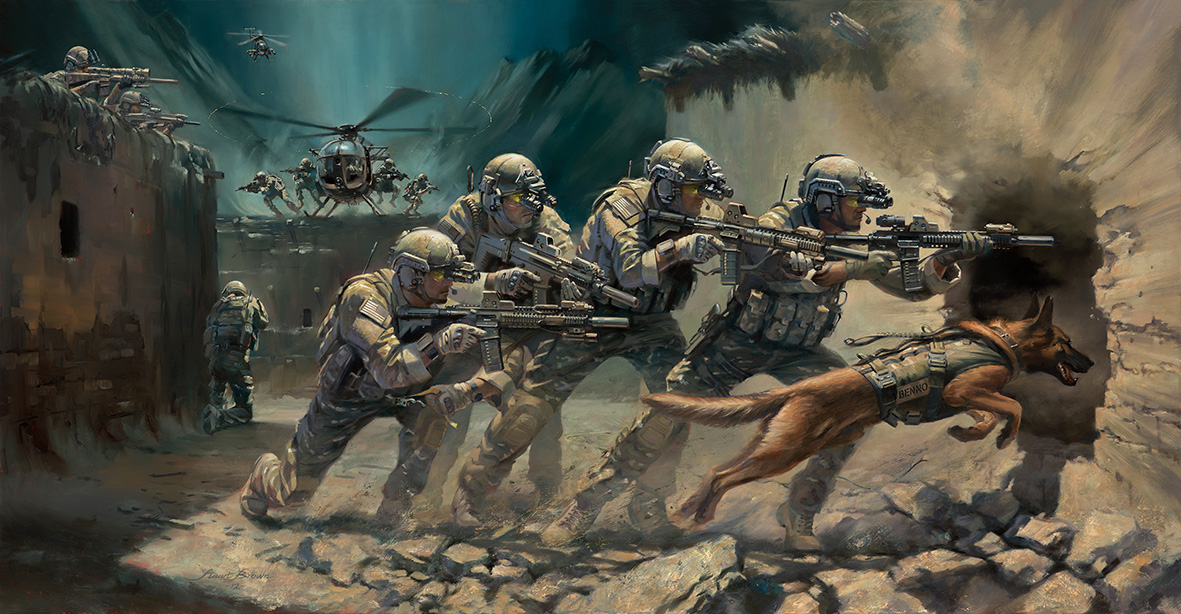

Ranger units have exemplified themselves in close combat from Roger’s Rangers to the Rangers of the 75th Ranger Regiment. The men of the 75th Ranger Regiment carry on this legacy as the nation’s premier forcible entry and raiding force, prosecuting targets in denied areas against a well-armed and determined enemy.
The painting portrays a Ranger Fire Team with their distinctive equipment, armed with a SCAR-H, M-4s and a Military Working Dog assaulting through the breach during a raid. A Ranger Sniper Team is in over-watch together with an AH-6 and MH-6 flown by members of the 160th Special Operations Aviation Regiment.
The US called upon the 75th Ranger Regiment as one of the first units to respond in the War on Terror. On October 19, 2001, Rangers executed a low level airborne assault, seizing Objective Rhino, an airfield in Kandahar, Afghanistan. For over eleven years, a reinforced Battalion of the 75th Ranger Regiment has been actively engaged in combat operations in Afghanistan and Iraq.
This painting is dedicated to Rangers of all eras who have gone ‘Into the Breach’, especially those who made the ultimate sacrifice.

Alix Schoelcher Idrache is a Haiti-born United States Army helicopter pilot.
Idrache’s father Dieujuste dropped out of school at 14 years old to find work in Port-au-Prince.[1] Alix Schoelcher Idrache was born in Haiti,[2] devoted himself to schoolwork at his father’s encouragement, and also saw the United States Armed Forces engaging in humanitarian missions there. After Dieujuste emigrated to the United States, he was able to bring his son in 2009,[1] who later became a naturalized citizen. In May 2016, the US Army listed New Carrollton, Maryland as Idrache’s hometown.[3]
After he graduated from the United States Military Academy (USMA) in 2016, an Army photo of a tearful Idrache went viral, and made the freshly-minted officer the target of hateful comments related to his immigrant and naturalized status.[4]
US Military
Idrache joined the Maryland Army National Guard in 2010[3]—later joking that they convinced him “because of a free t-shirt!” After completing Basic and Advanced Individual Training, Idrache successfully applied to the USMA with the assistance of his platoon leader and “the unit’s full-time office administrator”. Arriving in 2012,[1] Idrache graduated from the West Point, New York school (the Maryland Guard’s first, at the top his class in physics)[2] on 21 May 2016. Second Lieutenant Idrache was scheduled to be assigned to the Army Aviation Center of Excellence at Fort Rucker in July 2016.[1]

By June 2019, Idrache’s uniform bore the insignia of a first lieutenant and the Army’s 1st Infantry Division. That month he was stationed in Carentan and liaising with French media on the occasion of the Normandy landings‘ 75th anniversary.[5]
A captain assigned to the 228th Aviation Regiment by September 2021, Idrache joined Joint Task Force Haiti‘s response to the 2021 Haiti earthquake; the UH-60 Black Hawk pilot supported evacuation efforts as well as translating both French and Haitian Creole.[6]
A U.S. House of Representatives hearing on Wednesday focused on the “Veterans Second Amendment Protection Act,” which would reverse the policy for reporting to the National Instant Criminal Background System (NICS) when a veteran has appointed a financial fiduciary to handle his or her monetary affairs. The VA deems a veteran appointing a fiduciary to be mentally incompetent, barring them from purchasing a firearm as a result.
Veteran supporters and pro-gun advocates believe the VA reporting such an occurrence to NICS makes veterans in need of help less likely to ask for fear they’ll be denied their Second Amendment rights.
According to a report at freebasenews.com, VA Deputy Undersecretary Glenn Powers testified that his department opposes the act. Additionally, he said the VA already provides a sufficient method for beneficiaries who have been reported to NICS to “petition for relief.”
“VA did not err in reporting, and if passed into law VA could not comply,” Powers said.
Of course, “petitioning for relief” after one has lost their gun rights isn’t what the Second Amendment is all about. “Shall not be infringed,” doesn’t mean “Infringe and then see if you can get your rights back.” It’s akin to unconstitutional “red-flag” laws that allow the government to confiscate weapons because of possibly baseless accusations, then make the gun owner go to court and prove they deserve to have their firearms returned.
Speaking of such laws, Powers also said the VA would oppose a forthcoming bill that would bar the VA from joining in support of “red-flag” laws, also called extreme risk protective orders (ERPOs). Powers said that legislation “places the security and safety of veterans their families and communities at risk and ultimately prevents VA from providing appropriate care for some of our most vulnerable veterans.”
Of course, the VA undersecretary’s declaration that the agency would not follow a law if legally passed by Congress didn’t set well with supporters in the House, including Rep. Matt Rosendale, R-Montana.
“Well, I’m glad everybody hears that on the record—that the VA is going to refuse to comply regardless of what we actually pass here,” Rep. Rosendale said.

“The visit of the Marquis de Lafayette to the U.S”, New York, July 14, 1825. 2nd Battalion, 2nd Regiment of Artillery, New York State Militia welcomes the visiting hero of the American Revolution Marquis de Lafayette.
To honor him on his day of departure home to France, the unit adopted the name “National Guard” in remembrance of the Garde National de Paris, once commanded by Lafayette during the early days of the French Revolution.
Taking note of the unit and its new name, Lafayette left his carriage and went down the line of troops clasping hands. It was this instance the the modern term of “National Guard” came from in the U.S. From the collection of the U.S. Army National Guard.
When I first became involved with the U.S. Army’s High Altitude Rescue Team (HART) back in the 1990s, there was a steep learning curve. The mission was to retrieve injured climbers from Mount McKinley and support the National Park Service (NPS) in their mountain operations. At 20,310 feet, Mt. McKinley is the highest point in North America. They call it Denali now. This was quite an unnatural space for a helicopter.
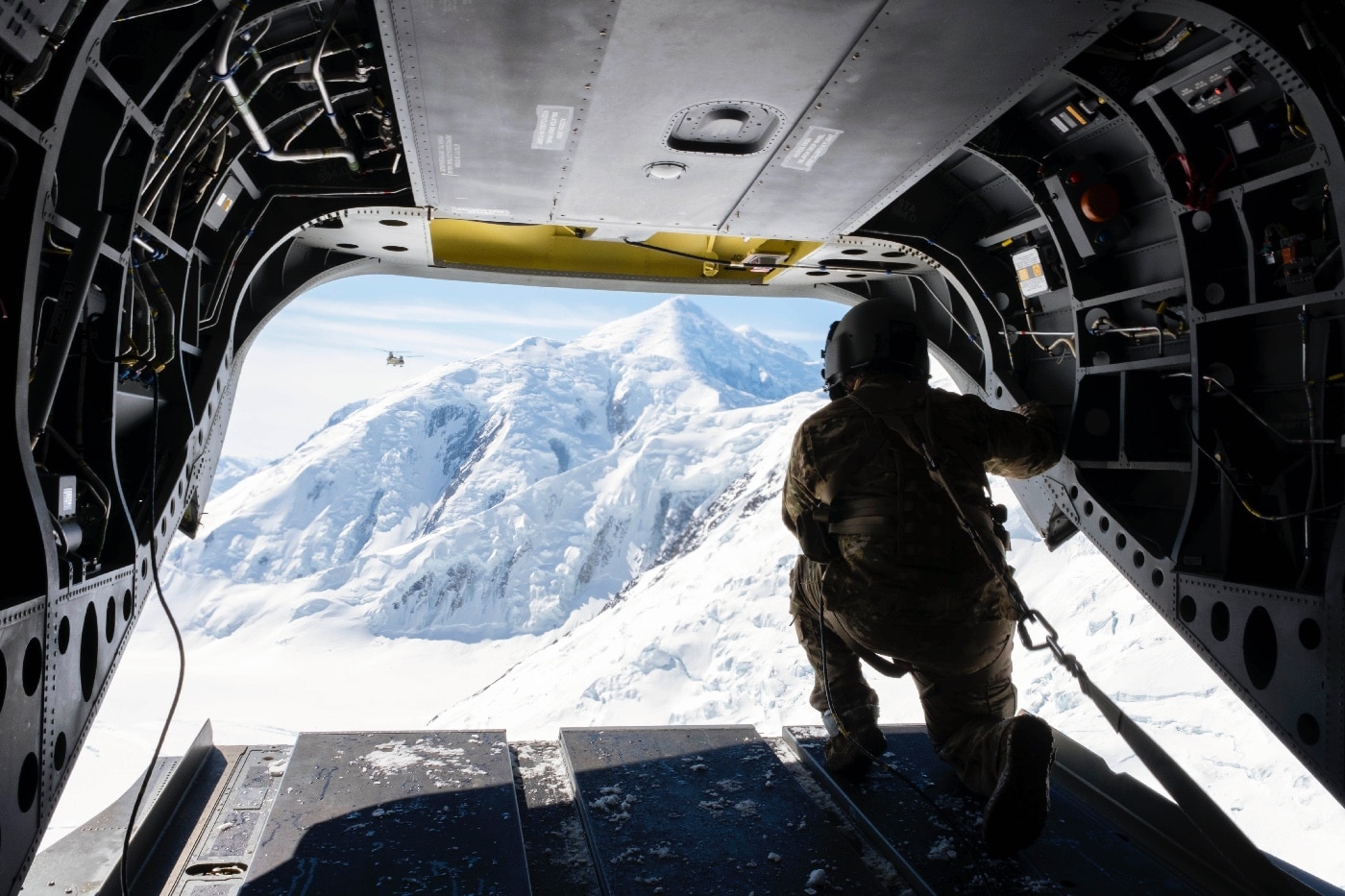
The National Park Service owned the mountain, and they had a contracted civilian helicopter that was based in Talkeetna, Alaska, during the climbing season. This single-engine French Aerospatiale Lama was stripped down to its bare essentials to give it maximum performance at extreme altitudes. When first I crawled aboard this aircraft, I noticed that the copilot’s seat and flight controls had been removed. Needless to say, I was impressed by the bravery required to be a pilot of this helicopter.
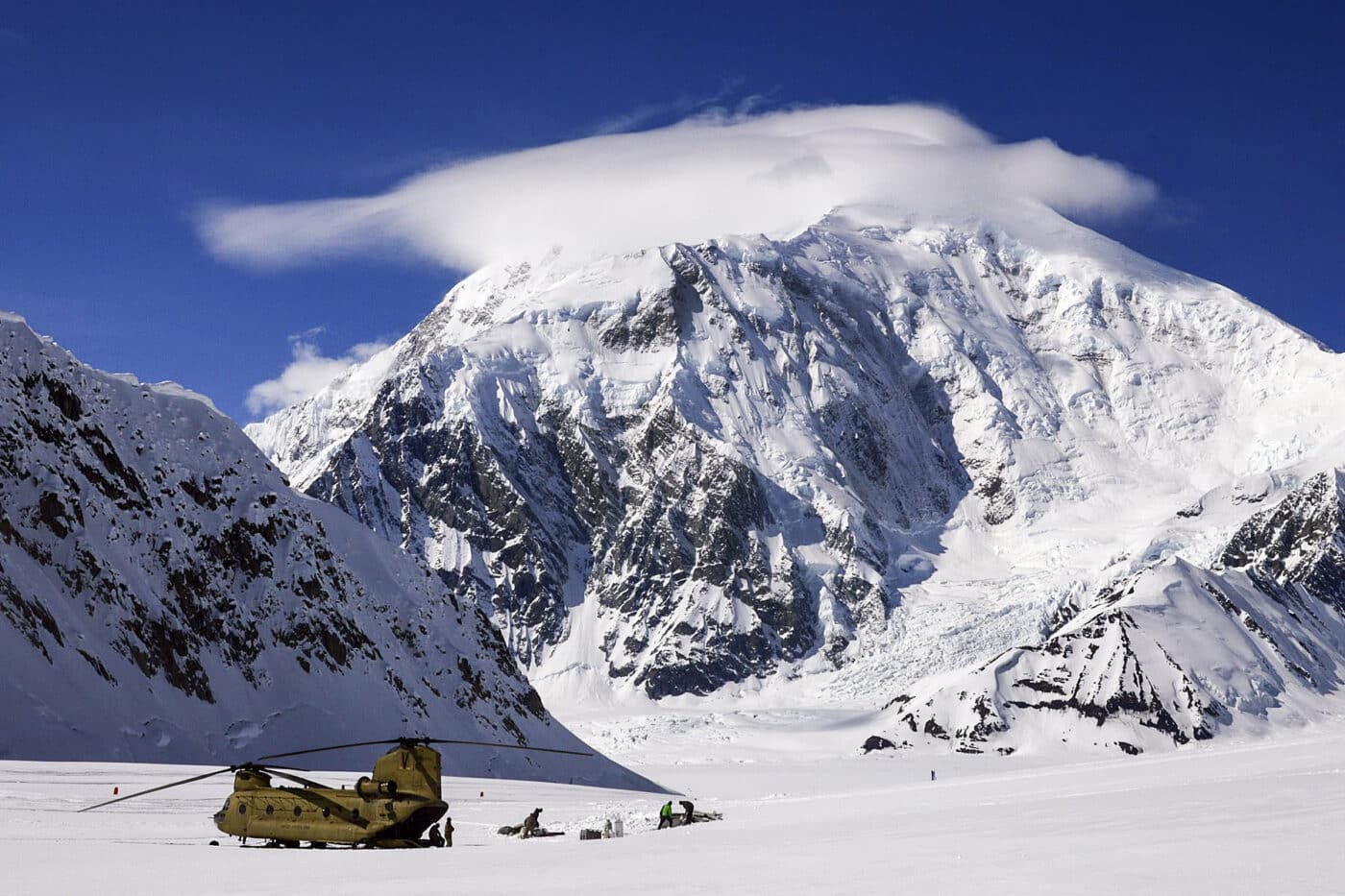
For routine trips up the mountain, if ever that was a real thing, the NPS used the Lama. For those times when the Lama was broken, or a bit more horsepower was required, they called us. I can honestly say that flying a helicopter over the top of Mount McKinley was the most extraordinary thing I did as a U.S. Army Aviator.
The Aircraft
For the HART mission, we utilized otherwise unremarkable Boeing CH-47D heavy-lift helicopters. We gutted our Chinooks of any unnecessary kit and fitted them with auxiliary internal fuel tanks and an onboard oxygen system for the crew due to the altitudes in which we would be flying. This labyrinthine thing included plumbing that ran oxygen lines to each crew station to support the flight crew while operating these unpressurized aircraft at extreme altitudes. Our crewmembers also had walkaround bottles that would keep them conscious while moving about the cargo compartment.
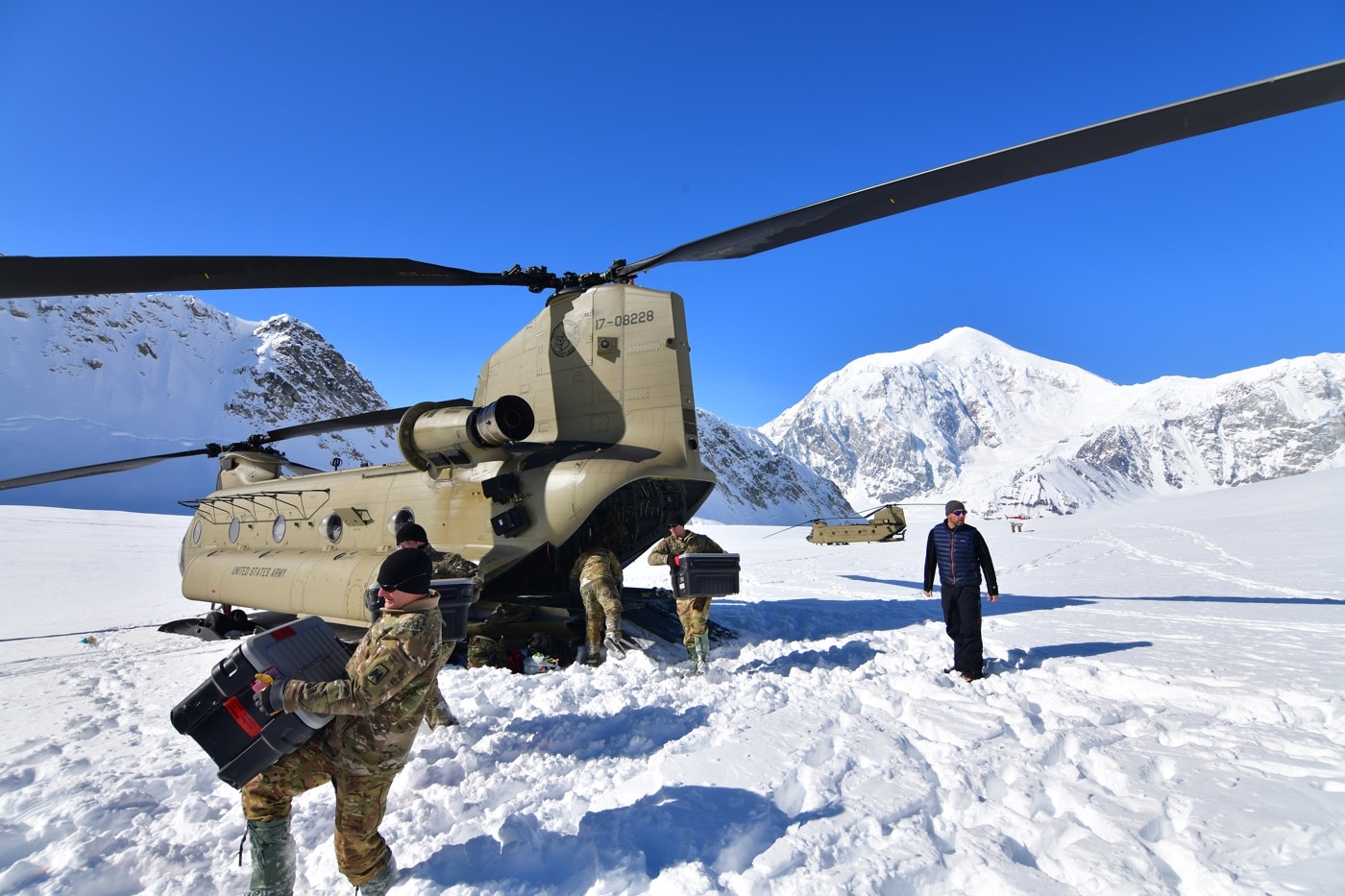
The max gross weight for a CH-47D is 50,000 pounds. Its twin Lycoming turboshaft engines put out an aggregate 9,000 shaft horsepower. It is an immensely powerful machine. However, at 21,000 feet the Chinook becomes a big fat pig. Great care had to be taken to plan maneuvers well in advance when the air was that thin. Those sorts of altitudes are terribly unforgiving. However, thusly configured the big Chinook would reliably get us there and back.
The Mission
Denali is actually the tallest mountain on earth, as measured from the base to the summit, even taller than Everest. While the peak of Everest is higher, you don’t have to climb as far to get there. Each year about 1,200 climbers attempt the ascent. Roughly half of them make it. Folks die on that rock all the time. There have been 96 fatalities on the mountain since the first successful ascent in 1913.
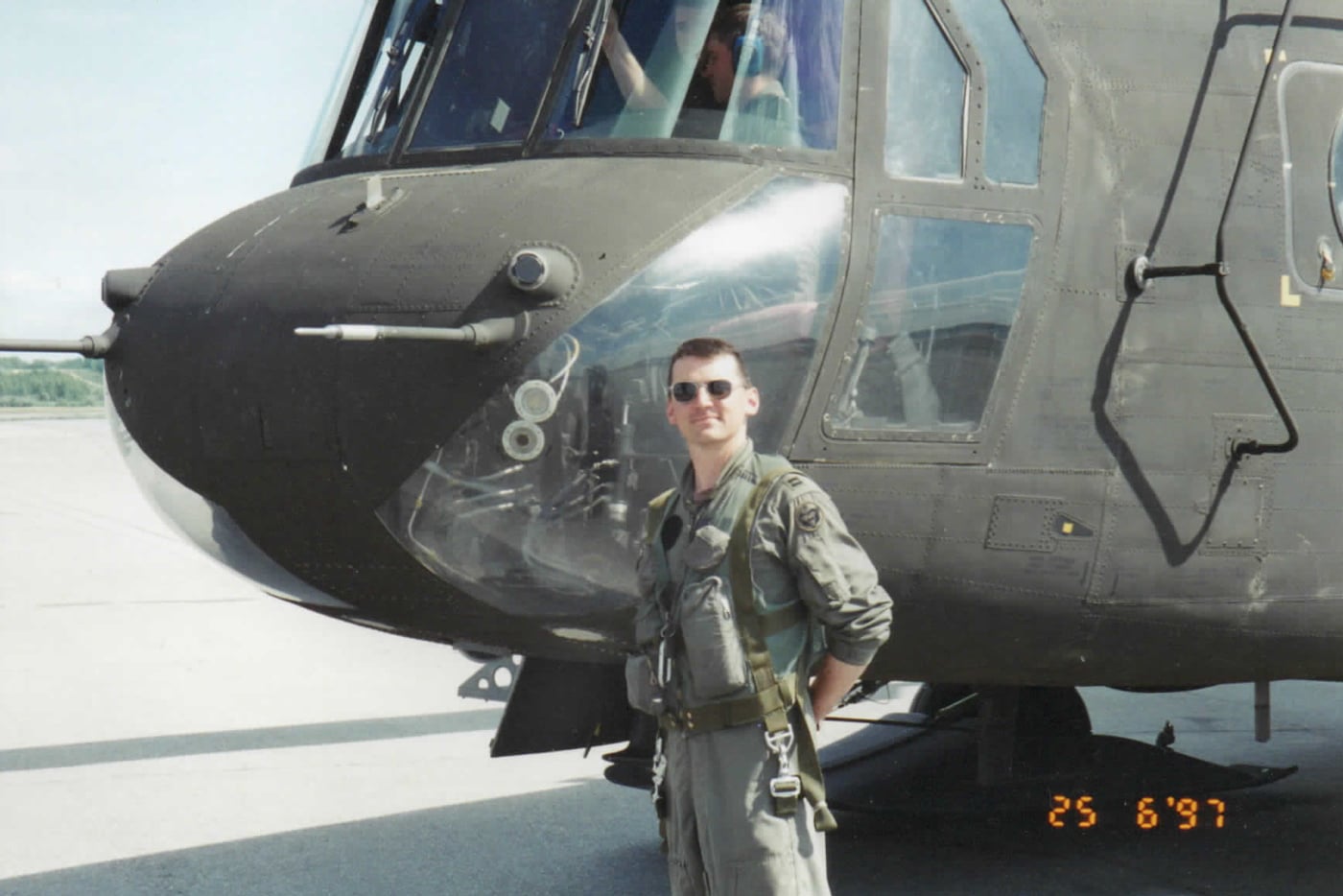
The NPS maintains a presence at both the high and low base camps on Denali throughout the approximate three-month climbing season. The low base camp is at 7,200 feet on the Kahiltna glacier. The high base camp is at 14,200 feet.
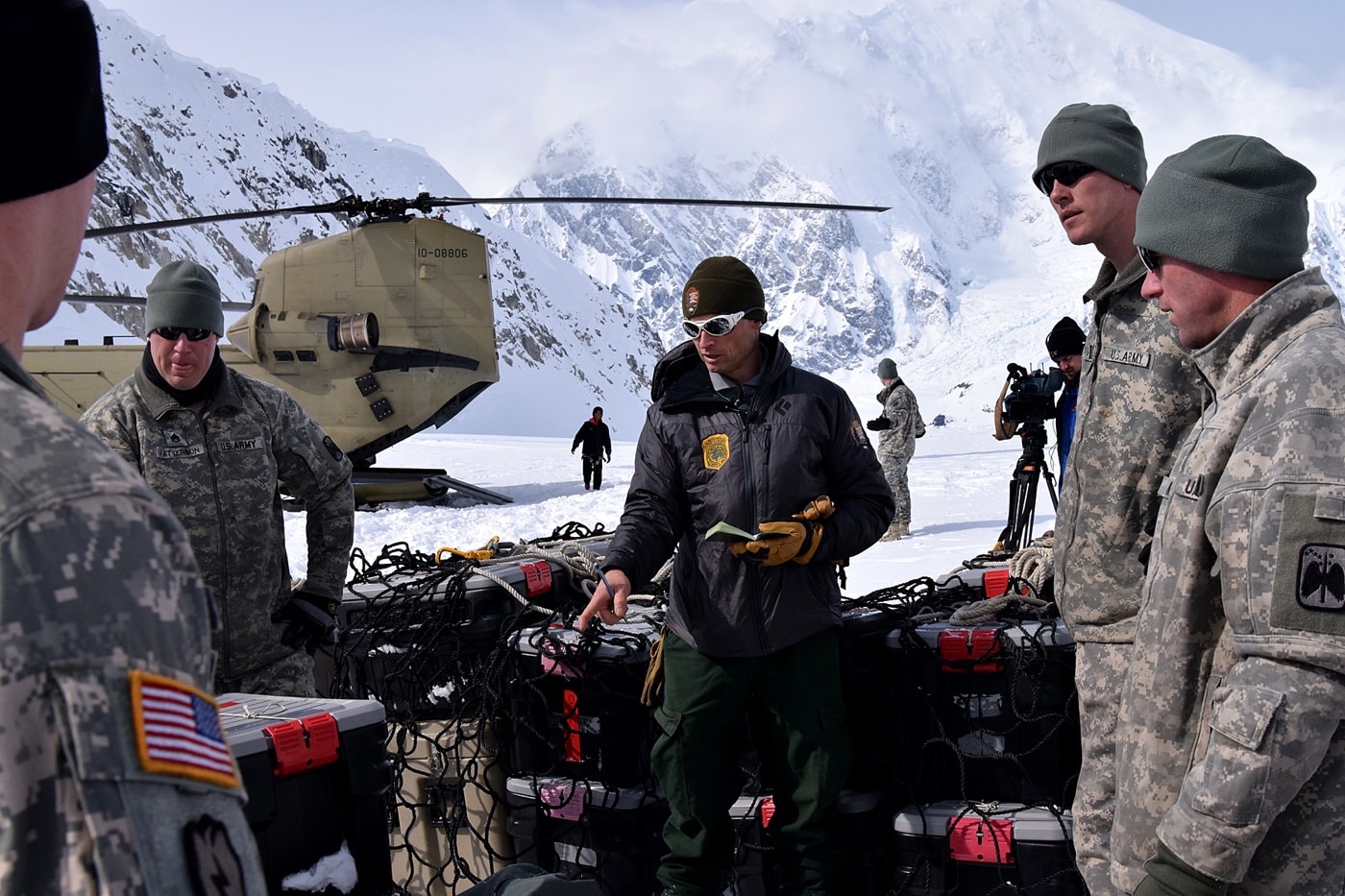
At the beginning of the climbing season, the HART team is responsible for emplacing the equipment to support these base camps. This consists of tents, food, fuel, radios and the sundry stuff required to keep people alive in such an austere environment. The HART team also retrieves everything at the end. These Army Chinooks also cover the gaps that the small civilian helicopter cannot.
Denali makes its own weather. As many a tourist has discovered to their disappointment, oftentimes the mountain is socked in while the rest of the surrounding area is clear and pretty. As the CH-47 is fully instrument capable, it can sometimes reach the mountain when the Lama cannot. The Chinook is also equipped with a rescue hoist that offers capabilities not available to the smaller machine. In 1988, the HART team set the world record for a helicopter hoist rescue at 18,200 feet. In 1995, the HART team performed a live rescue at 19,600 feet, setting a record for the CH-47 airframe.
War Story
On 3 June 1996, we were on a training mission to get our aircrews qualified for the climbing season. We always ascended the mountain in pairs. The weather had been sketchy and getting to high altitudes had been a challenge.
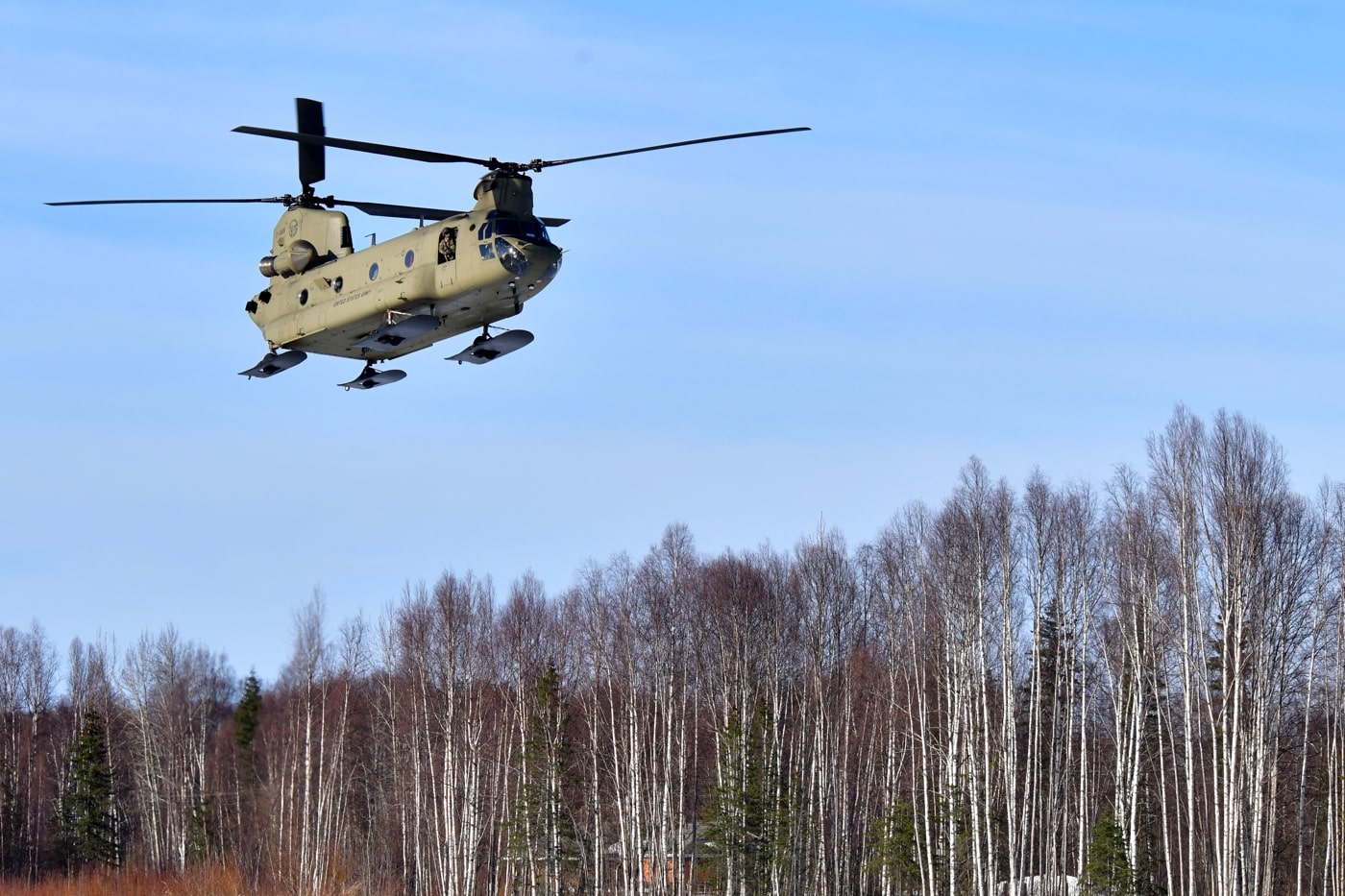
Two days before, a Spanish climber named Juanjo Garra lost a crampon and fell at the 18,000-foot level at Denali Pass, breaking his leg. At these sorts of altitudes, this is a catastrophic injury. NPS rescue personnel laboriously carried the man to the 14,000-foot base camp, but by then, he was in dire straits.
As we shot a careful approach into the high base camp, we knew nothing of Mr. Garra or his injury. Once we touched down, an Air Force pararescueman who was climbing the mountain as part of a training exercise flashed us with a signal mirror. He explained that Garra had to be removed from the mountain or he could die.
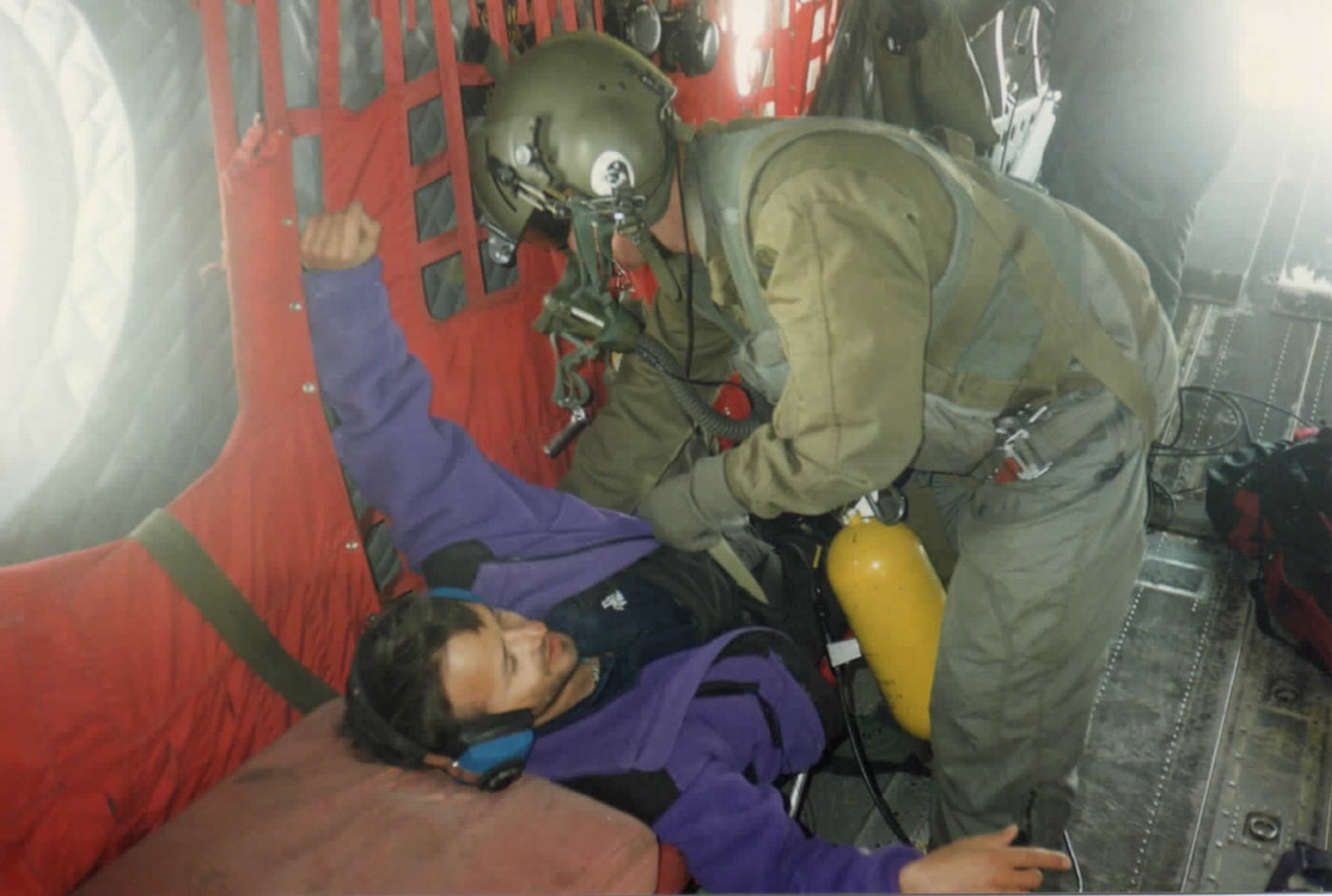
The formal approval process for rescue support was laborious. Each live mission had to be approved by the first General Officer in the chain of command. However, they claimed we Army officers were supposed to show initiative. Mr. Garra was soon strapped in alongside his climbing partner, a Spanish cardiologist. Incidentally, I think that was the closest I have ever come to being kissed by a man. That guy was pretty stoked to be getting off that mountain.
We flew the two Spaniards to the low base camp where they were loaded onboard a ski-equipped airplane for the trip to the Anchorage hospital. I flew home that afternoon assuming I had done a good thing. My boss felt otherwise.
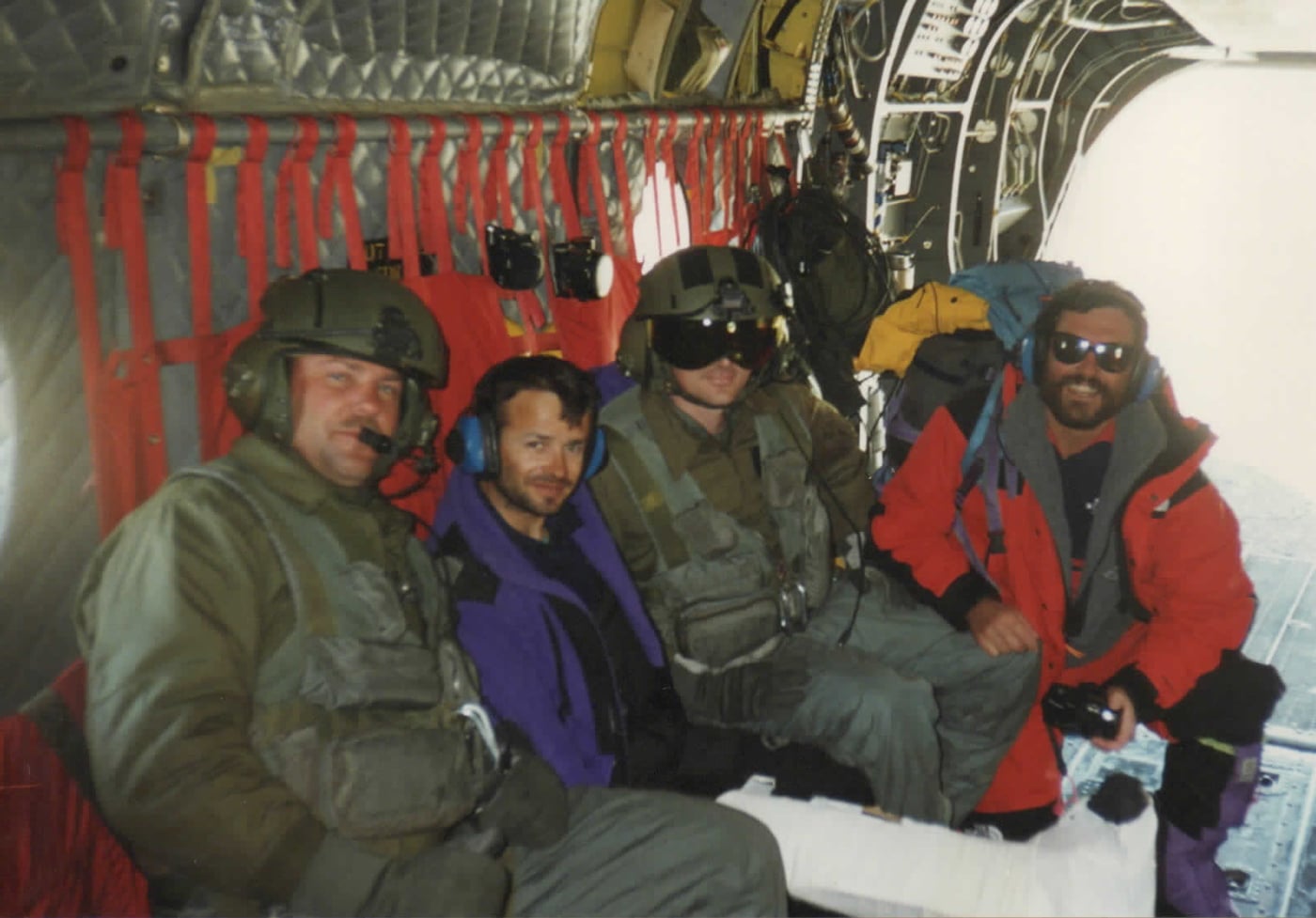
Once we got the aircraft shut down I was dragged into my commander’s office for a proper butt chewing. My on-the-spot decision had completely circumvented the chain of command. I had allowed two foreign nationals onboard a U.S. Army aircraft without proper authorization. The liability had been astronomical. What if the aircraft had crashed? What if there had been an in-flight emergency? What if, what if, what if…
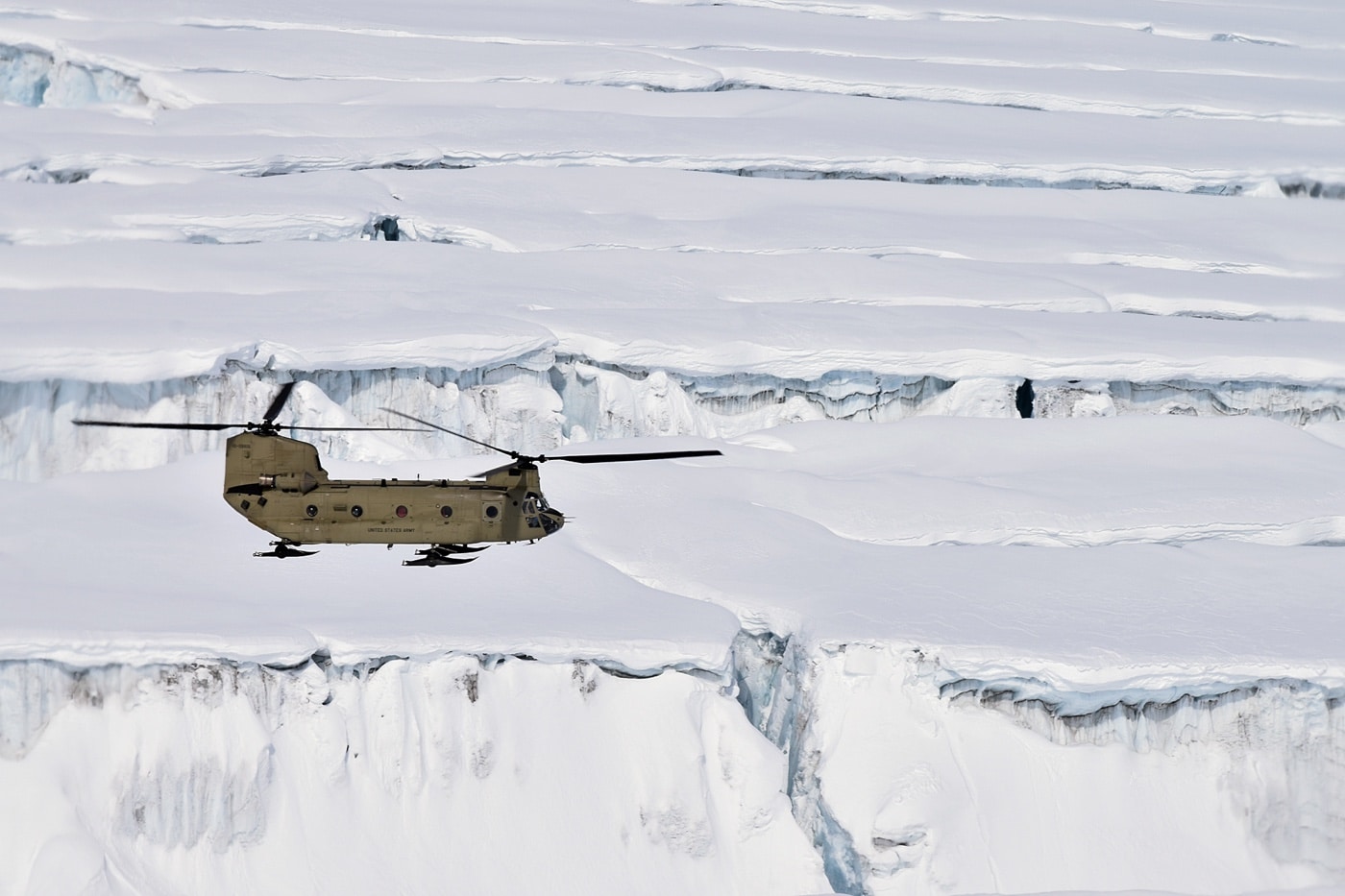
While I was getting reamed out, the phone rang. It was the U.S. Coast Guard congratulating us for the rescue. They wanted the names of the crew for the press release. My boss hung up the phone and sighed. He reluctantly congratulated me for saving a man’s life but then directed me never to do it again.
It has been 27 years since that weird afternoon on Mt. McKinley. I left the Army soon thereafter and went to medical school. Along the way I bought a laptop and tried my hand at writing. Until I was researching this article I had never known Juanjo Garra’s name. I sincerely hope he is well.
——————————————————
A side note from Grumpy